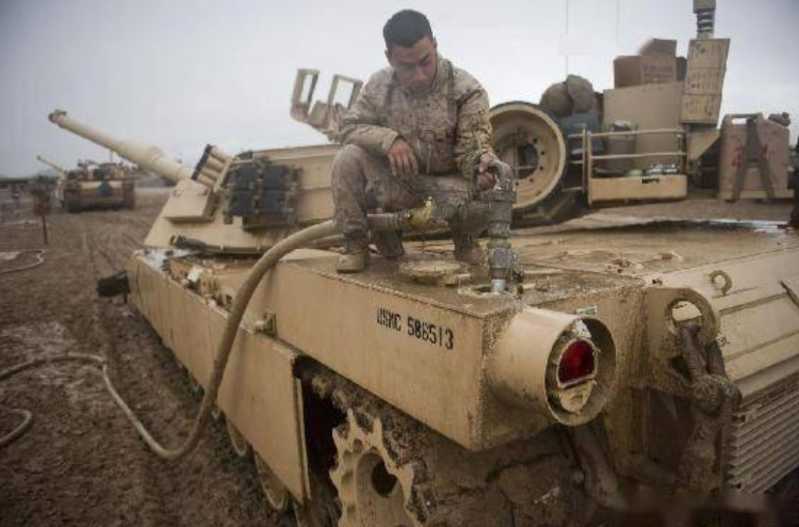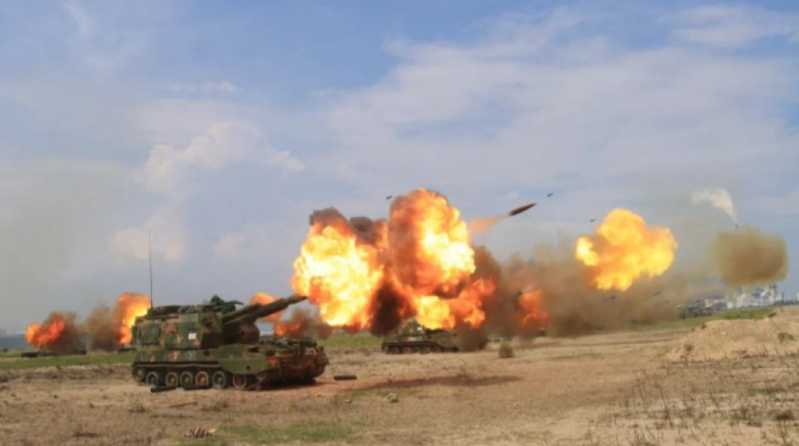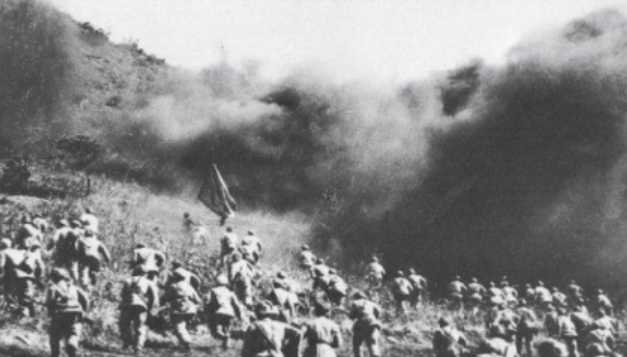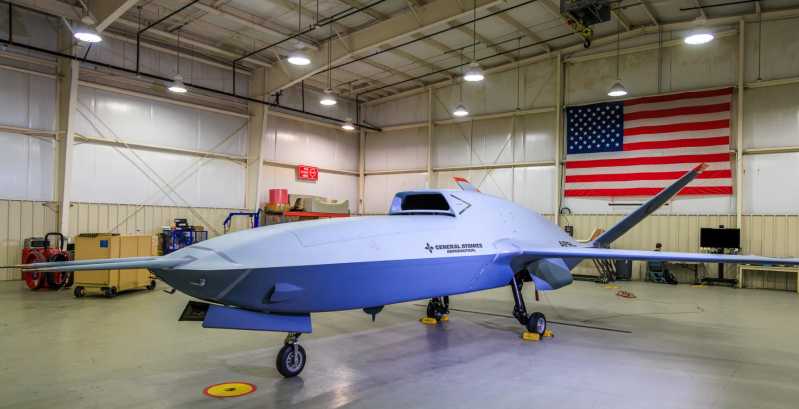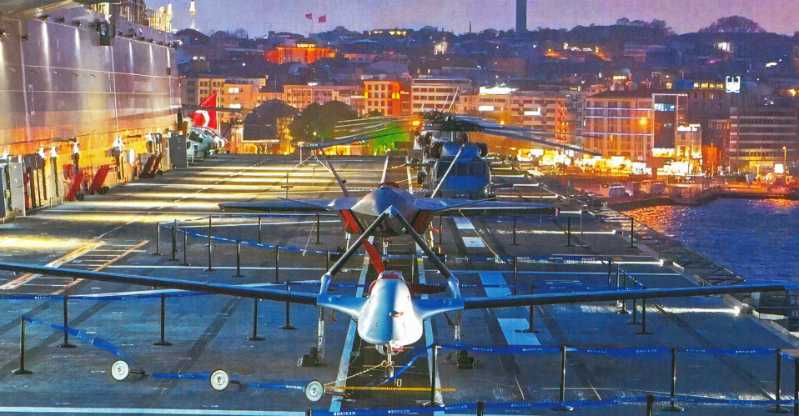Recently, the Russian State Technology Group Corporation announced that an upgraded A-50U early warning aircraft has been delivered to the Russian Ministry of Defense, and another A-50U will be delivered in the near future. This aircraft is designed to detect enemy targets at a long distance, indicate targets for lethal weapons or interception tools, and transmit intelligence to the command post. Analysts say that such aircraft are actively participating in special military operations, and increasing the number of early warning aircraft will help improve the efficiency of defending against enemy drones and cruise missiles. So, how is the performance of the A-50U early warning aircraft? How is the development of Russia’s new generation of early warning aircraft?
The A-50 early warning aircraft that is constantly being improved and upgraded
The A-50 early warning aircraft is the most important type of early warning aircraft in active service in Russia. It is a large early warning aircraft that the Soviet Union began to develop in the late 1960s and began to serve in 1984. NATO calls it the "backbone." The Soviet Union/Russia is the second country in the world to independently develop early warning aircraft after the United States. Its development history can be traced back to 1958. The earliest early warning aircraft model was Tu-126, which NATO called "Moss". At this time, it was 13 years behind the birth of the first American early warning aircraft model TBM-3W. After 8 years of hard work, "Moss" began to serve in 1967, and 9 aircraft were produced and retired in 1984.
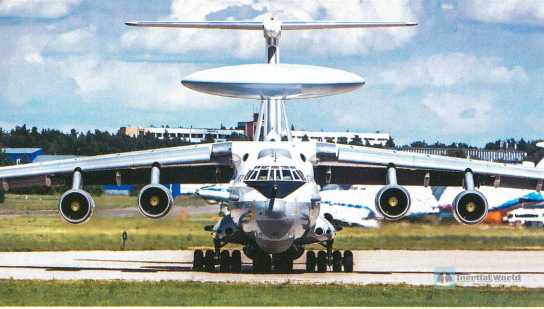
The "Moss" early warning aircraft is a modified Tu-114D passenger aircraft of the Tu-95 large bomber. The Tu-114D has four turboprop engines and a maximum take-off weight of 175 tons. The maximum take-off weight of the EC-121, the main early warning aircraft used by the US military at that time, was less than 70 tons. Even today, such a large aircraft is still very large. Among the early warning aircraft developed by Western countries, only the E-767 is comparable to it. Its rotating radar antenna cover is installed in the middle and rear of the back of the aircraft, with a diameter of 11 meters and a height of 2 meters. This size is larger than the later US E-3 early warning aircraft, and even larger than the A-50 developed by Russia on a larger body. In the late 1960s, the insufficiency of the Tu-126 early warning aircraft in meeting combat needs was increasingly exposed, because the threat of low-altitude penetration weapons to national air defense had become prominent at that time, and the radar line of sight of the early warning aircraft needed to look down from above over the land. At this time, the radar antenna would receive much stronger ground clutter than the sea surface. However, due to the limitation of the technical level at that time, the pulse Doppler technology had not reached the engineering practical stage, and it was impossible to distinguish the ground clutter and the target echo by using the difference in Doppler frequency. Therefore, the Soviet Union began to develop a new generation of early warning aircraft, which is the A-50 (at this time, the United States had just started the development of the large land-based early warning aircraft E-3).
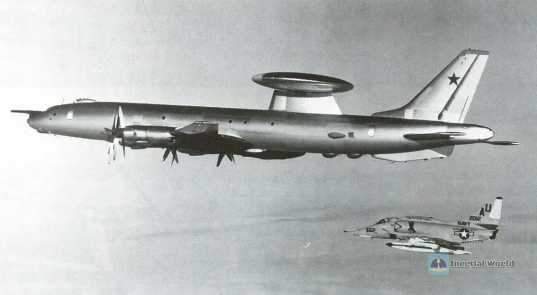
In the A-50 development project, the Russians first developed surveillance radar and mission computers, namely Shmel pulse Doppler three-coordinate radar and ECABM computer. The development work was completed in the mid-to-late 1970s and it was put into service in 1984. The Tu-126 was retired in the same year. When selecting the carrier aircraft, Russia had studied the possibility of using the Tu-154 passenger aircraft, Tu-142 maritime patrol aircraft, and Tu-126 modified aircraft as carrier aircraft. Finally, it chose the most advanced military long-range transport aircraft Il-76MD at the time, and added the mission electronic system to form the A-50 early warning aircraft on its modified basis.
The maximum take-off weight of the A-50 early warning aircraft is as high as 190 tons, the maximum flight speed is 850 kilometers per hour, the cruising speed is 700~750 kilometers per hour, the ceiling is 12,000 meters, the endurance time is 7.5 hours, and it can patrol for 4 hours at a distance of 1,000 kilometers from the base. It has the ability to receive fuel in the air. The personnel on the A-50 early warning aircraft include 5 pilots (pilot, co-pilot, flight engineer, navigator and radio operator) and 10 mission system operators (1 mission commander, 6 radar operators, 1 radar engineer, 1 communication engineer and 1 information engineer).
The A-50 is very crowded. There are 8 display consoles on the left and right sides of the front cabin behind the cockpit, which are used by the mission commander, radar operator and radar engineer respectively. In addition, there is a control seat for each communication engineer and information engineer. Four electronic computers, 12 UHF and HF radios, radar signal processing subsystems, active electronic jamming subsystems, low-voltage power cabinets, etc. are installed above the display consoles and control seats and at the rear of the cabin, filling the cabin space. The rear cabin is smaller, mainly containing radar transmitters, microwave receivers, IFF interrogators and cooling system equipment, as well as a set of S-band directional transmission guidance data links corresponding to the TADIL-C of the E-3A. The antenna of the latter is also installed on the back of the radar antenna together with the IFF interrogator antenna. There is no crew lounge in the crowded cabin, and it is not possible to take shift change combat support personnel. The power consumption of the mission electronic system is provided by the auxiliary power unit carried on the left side of the fuselage. The auxiliary power unit has a strong power supply capacity (4x120kVA). However, the noise generated by its engine is huge, making the total noise level in the cabin reach more than 90dB, which aggravates the harshness of the crew environment. The A-50 is equipped with two digital transmission guidance systems. The first is the "Rainbow" directional high-gain digital transmission guidance system. Its antenna is installed back to back with the radar antenna, rotates synchronously with the radar antenna, and works in a narrow beam burst mode. This installation method is similar to the E-3A. The operating frequency is 2700MHz (transmit) and 1000MHz (receive), the transmission power is 200W (peak), and the beam width is 3. The second is the "Turquoise" omnidirectional data guidance system, which works in the ultra-short wave band.

After the A-50 entered service, the Shmel radar and the mission computer could not work well together, so the Shmel radar and the mission computer were improved. The improved radar is called the Shmel-2 radar. The AWACS equipped with Shme1-2 and improved computers and equipped with passive detection equipment, chaff jammers, and infrared decoys is called A-50M, which entered service in 1991. It is reported that the radar system is capable of detecting large air targets such as strategic bombers and AWACS within a range of 200-400 kilometers. At shorter distances, it is possible to detect fighters and drones, but the detection range will be affected by the radar cross-sectional area of the target and the engine emission signal. Before the modernization of the A-50, its radar system had a detection range of only 150-250 kilometers. After detecting the target, the radar system will use an automatic tracking system to track the target and pass the data to the crew’s information display system.
Modernized A-50U AWACS
Since the Soviet Union/Russia’s electronic technology level, especially integrated circuit technology, lags behind the United States, the detection and command and guidance capabilities of the A-50 AWACS are inferior to those of the E-3A AWACS. The electronic equipment is bulky, fuel-intensive, noisy, and the operator’s working environment is poor. In order to continue using the A-50 AWACS to perform missions in the next 10 to 20 years, around 2000, the Russian Air Force proposed to modernize it based on the A-50M.
In 2003, Russia began to modernize the A-50 in service, and the comprehensive upgrade work began in 2008. The aircraft was named A-50U. The factory test lasted until July 2009, and the joint test was completed on November 26 of the same year. The main improvements included installing a new radar, using a new high-power engine, replacing the system mission computer, and improving the human-machine interface.
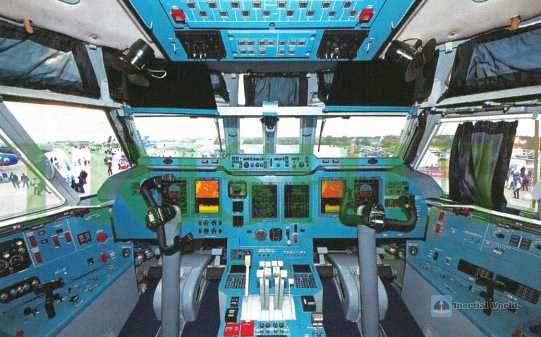
It is reported that the improved A-50U early warning aircraft has effectively solved the problems of noise interference and ultra-high frequency radiation, reduced the weight of the fuselage, and adopted a lower vertical tail to significantly improve flight stability. At the same time, due to the use of four D-30KP-2 turbofan engines, the flight distance and range have been greatly improved.
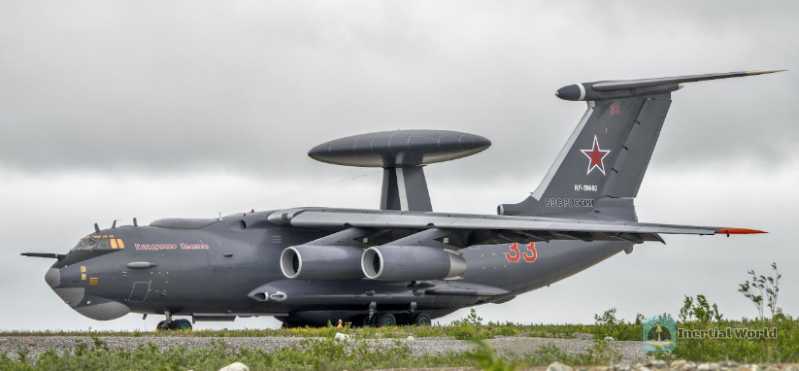
Compared with the A-50, the A-50U early warning aircraft uses an omnidirectional rotating radar antenna cover, is equipped with a new source phased array radar antenna, and uses a new high-power transmitter. The detection distance has been increased from the original 230 kilometers to more than 350 kilometers. It can detect smaller aircraft at a long distance, and the tracking capability has been increased from 50 batches to 300 batches. These indicators are already comparable to the E-3.
At the same time, the A-50U AWACS has updated its onboard electronic equipment, installed more advanced communication and command systems, replaced advanced integrated circuits and components, and implemented modular design, which has significantly reduced the weight and volume of electronic equipment, and increased the mission reliability from the original 50 hours to 200 hours: In addition, the A-50U AWACS focuses on upgrading the digital signal processing system, adopts advanced computer systems, and replaces the cockpit with a large-screen LCD display, further improving the automated command transmission and data communication capabilities. It is worth mentioning that the A-50U has also made great improvements in the cabin environment, with comfortable toilets, lounges and other facilities set up, so that the crew can get a good rest, thereby improving combat efficiency. In short, after the improvement and upgrade, the combat performance of the A-50U AWACS has been greatly improved, and the capabilities of intelligence processing, target identification, radio communication and satellite navigation have been effectively improved. The combat missions of the A-50U AWACS include detecting and tracking predetermined targets, ensuring battlefield command and communication, and mobilizing air combat forces to carry out fire strikes. The birth of the A-50U early warning aircraft is of great significance for the Russian Aerospace Force to build an integrated air-space defense system, integrate battlefield intelligence reconnaissance, and improve early warning command efficiency.
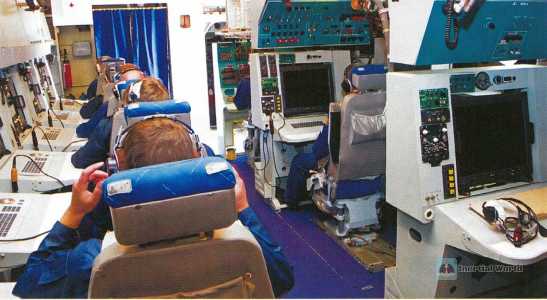
As the most advanced early warning aircraft currently in service in Russia, Russia also has high hopes for the A-50U early warning aircraft. Vyacheslav Mikheev, chief designer of the Russian Vega Joint Enterprise, said: "The use of the A-50U flight radar in special military operations areas can help quickly detect enemy air targets and use air force and air defense forces to effectively confront them." Military expert Yuri Knutov also said: "This aircraft can conduct air Surveillance. When Ukrainian aircraft (such as Su-24 and Su-27) take off to launch cruise missiles, the early warning aircraft can detect them and transmit data to the headquarters. If necessary, the Russian army will send interceptors to destroy the enemy cruise missiles. "

Although the A-50 itself has undergone two major improvements, even the latest improved version of the A-50, the A-50U, has limited overall performance improvement. On the other hand, the American E-3 AWACS, which is of the same type as the A-50 and of the same period, has been continuously improved in the past decade. It should be said that the gap between the Russian A-50 and the E-3 series is widening, rather than narrowing as is usually believed. The reason is that Russia’s own electronic technology development level is generally behind the world’s advanced level represented by the American E-3 series AWACS, especially in terms of AWACS data link, passive reconnaissance and system working environment. Whether in terms of technical system or combat use, the A-50 lags behind the E-3 AWACS. If Russia wants to catch up with the E-3 AWACS, it needs to make a complete improvement to its A-50U, and the workload of such improvement is no less than developing a brand new aircraft.
So, in order to improve its airborne early warning capability, in April 2004, Russia signed a presidential decree to start developing a new type of AWACS - A-100. On June 8, 2006, the Russian Ministry of Defense officially signed an agreement to develop the A-100 new generation AWACS project, code-named "Prime Minister". On November 18, 2017, Russia’s new generation A-100 early warning aircraft completed its first flight. In February 2022, the A-100 turned on its airborne radio system and completed its first flight. This means that the A-100 early warning aircraft is not far from entering service.
Russia’s new generation of early warning aircraft
The A-100 early warning aircraft is integrated by the Russian "Beriev" Taganrog Aviation Technology Complex, and the new radar is developed by the "Vega" Radio Manufacturing Company. The first A-100 is based on the Il-76MD platform, and the subsequent aircraft carriers will use a new aircraft called "Product 476" (Il-76MD-90A), namely the Il-476. In other words, in addition to the aircraft itself, the components of the mission electronic system of the first experimental early warning aircraft will be brand new.
First of all, in terms of flight platform, the Il-476 transport aircraft used by the A-100 early warning aircraft is a modernized and improved version of the Il-76MD transport aircraft currently in service with the Russian Air Force. Compared with the Il-76MD transport aircraft, which is the carrier of the A-50 early warning aircraft, the Il-476 platform of the A-100 carrier aircraft has two main improvements.
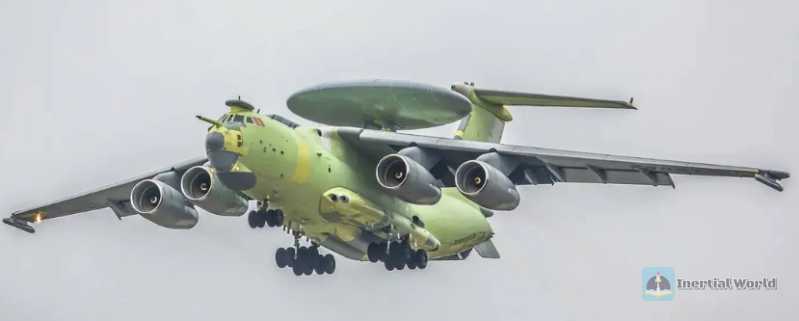
The biggest improvement of the Il-476 compared to the Il-76MD is the power system, which has been replaced by the PS-90A-76 high bypass ratio turbofan engine instead of the original D-30KP-2 engine. This engine is a mature model and has been used in the modernized version of the Il-76TD (civilian version of the Il-76) Il-76TD-90VD, and its performance is very reliable.
The D-30KP-2 turbofan engine originally used not only has a loud noise, but also emits harmful substances into the atmosphere when working, which exceeds the standards set by the International Civil Aviation Organization, so that some countries’ airports prohibit the take-off and landing of such transport aircraft, which seriously affects the use of aircraft. In contrast, the PS-90A-76 engine not only has a large thrust, with the thrust of a single engine increased from 12 tons to 14.5 tons, but also has low noise, and the emission of harmful substances meets the emission standards implemented by the International Civil Aviation Organization in 2006. After the thrust was increased, the maximum take-off weight of the Il-476 increased from 190 tons to 200 tons, the maximum load also increased from the original 50 tons to about 60 tons, the cruising speed increased from 750~780 kilometers/hour to 830~850 kilometers/hour, and the range increased from the original 5500 kilometers to 7500 kilometers.
Another outstanding advantage of the PS-90A-76 engine is fuel saving. Because of the large bypass ratio, the fuel consumption of the four engines per hour is reduced from 9 tons of D-30KP-2 to 8 tons, and the fuel efficiency can be increased by 12.15%. After conversion, under the same conditions, its range can be increased by 15-20%, so its economic benefits are very considerable.
Another major improvement of the Il-476 is the avionics system. The original Il-76MD cockpit adopted a traditional design, all mechanical pointer instruments, and the pilot needed to read the parameters of each instrument during flight to understand the aircraft status. By the time of the Il-76TD-90VD, since the aircraft used the new PS-90A-76 engine, the engine itself had a digital engine integrated management system, so the original analog engine instrument on the aircraft was replaced with a digital multi-function display, and a digital navigation system was added, which was considered an upgrade from a traditional cockpit to a "semi-glass" cockpit, but it was still backward.
Therefore, when developing the Il-476, the Ilyushin Aviation Association redesigned the aircraft’s avionics system and adopted a digital integrated avionics design. The pointer instruments on the aircraft were replaced by 6 multi-function color LCD displays, which can comprehensively display the aircraft’s attitude, flight parameters, engine parameters, and navigation parameters, etc., and completely upgraded to a "glass" cockpit. Moreover, after adopting the integrated avionics system, due to the improvement of work efficiency, the crew no longer needs so many people. The navigator in the original position of the nose glass cover and the communicator in the side position of the cockpit were cancelled. The crew configuration was reduced from the original 5 to 3, and the economic efficiency of use was significantly improved.
In short, compared with the Il-76MD transport aircraft, the Il-476 has been comprehensively improved and has advanced performance.
Secondly, in terms of airborne radar, the A-50U’s airborne radar is a traditional three-coordinate radar, which can detect aircraft with a launch cross-sectional area of less than 5 square meters at a distance of 350 kilometers and can track and process 300 targets at the same time. The A-100 early warning aircraft inherits part of the mature design of the A-50 and still uses a back-mounted rotating radome, but it is equipped with VegaConcern’s Premier active phased array radar, especially a unique double-sided array design. Its radome is equipped with two double-port back-to-back radars. One side is an S-band radar, which is mainly used for long-range search and early warning and target tracking and locking. The other side is a specially optimized UHF band anti-stealth radar, which is mainly used to detect fifth-generation fighters such as F-22 and stealth fighters such as B-2 in high-tech wars. It is reported that the A-100 has a detection range of 600 kilometers for small air targets and 400 kilometers for sea detection. The radome rotates once every 5 seconds and can track 300 targets at the same time, and conduct relay attacks on 50 of them.
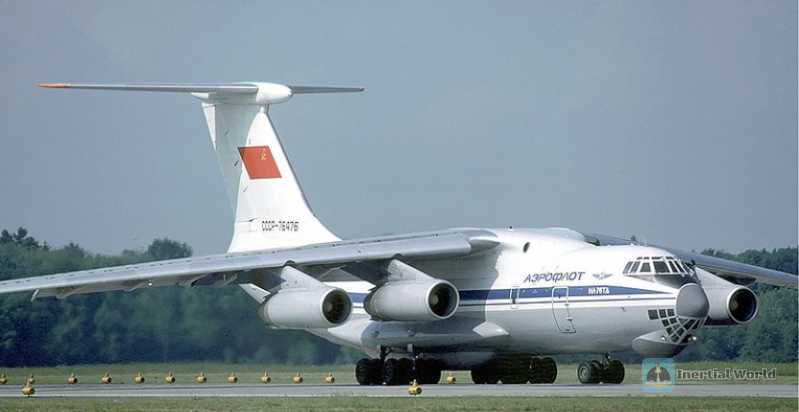
However, this radar also has certain defects. In order to ensure that the radars of both bands have a horizontal 360-degree detection capability, the A-100 uses a rotating radar antenna, which is what we often call mechanical scanning. It can only rely on the rotation of the radar cover to achieve battlefield vision, but there is a scanning time interval between the two radars, and it is impossible to achieve a long-term fixed search of the battlefield environment. It takes more than 3 seconds to rotate once on average, and it takes more than 15 seconds to lock and track the target, so it is easy to miss the target.
In contrast, my country’s KJ-2000 early warning aircraft uses a fixed three-array active phased array radar system. Its radar antenna is composed of three radar antennas using an active phased array system. Each antenna scans 120° and has high reliability, flexible and rapid beam pointing, and can simultaneously realize multiple functions such as search, identification, tracking, and guidance. It also has strong anti-interference capabilities and many other advantages. It can complete accurate positioning, information analysis and transmission in a short time, and its battlefield reaction speed exceeds that of mechanical scanning radar.
Of course, the A-100’s double-array radar system is small in size and weight, which is very suitable for shipboard, which is of great significance to the future development of Russian carrier-based fixed-wing early warning aircraft.
Finally, the A-100 early warning aircraft is also equipped with new intelligence, electronic warfare and other systems. It is reported that the A-100 early warning aircraft uses the most advanced radio technology equipment, which can detect and track air and other targets, and participate in the command and control of fighters and attack aircraft, guiding them to air, ground and sea targets. Its radio technology equipment is a technical solution based on advanced components, high-performance computers and the latest domestic radio electronic achievements, including data receiving and processing equipment and operator automation workstations. The communication equipment installed on the AWACS can integrate the aircraft into a modern automated command system, so that real-time air situation information can be transmitted to the ground command and air defense system.
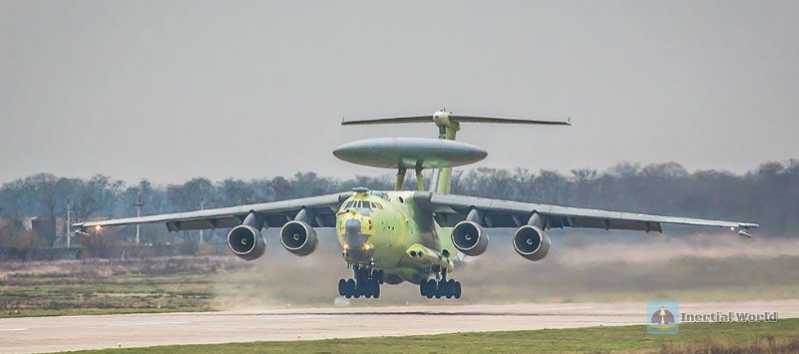
In addition, the A-100 is also able to transmit target data in a fully automatic mode without voice communication, and has a unique radiation penetration capability in the world. According to the Russian side, it is now almost impossible to "flood" the new AWACS with interference signals through electronic warfare.
Russia has high hopes for the A-100 AWACS. The media said that it is one of the major achievements of the Russian Air Force in the field of aviation technology so far. At present, the aircraft has completed its first flight in 2022 with the airborne radio system turned on. During the test flight, experts checked the aerodynamic performance of the aircraft, the performance of some special equipment of avionics and airborne radio technical equipment, indicating that the aircraft’s system operation meets the specified parameters and is ready for further testing. Sergey Parkhayev, crew commander and test pilot of the Bereev Aircraft Company, said: The flight was carried out in normal mode. All systems and equipment operated smoothly. Moreover, the test proved that specific equipment and the aircraft’s onboard systems operated normally in the presence of strong electromagnetic radiation. All this information indicates that the A-100 early warning is progressing smoothly and will be put into service soon. In short, the Russian A-100 early warning aircraft is a new type of early warning aircraft that integrates intelligence, surveillance, reconnaissance, early warning and command. Compared with early warning aircraft such as the A-50U, its performance has been comprehensively improved, especially the detection capability for stealth targets has been improved, which is of great significance to improving Russia’s early warning level and building a modern early warning combat system. It is reported that the development and testing of the A-100 early warning aircraft is planned to be completed in 2024. After that, mass production will begin to replace the previous generation A-50 and its upgraded A-50U early warning aircraft.




